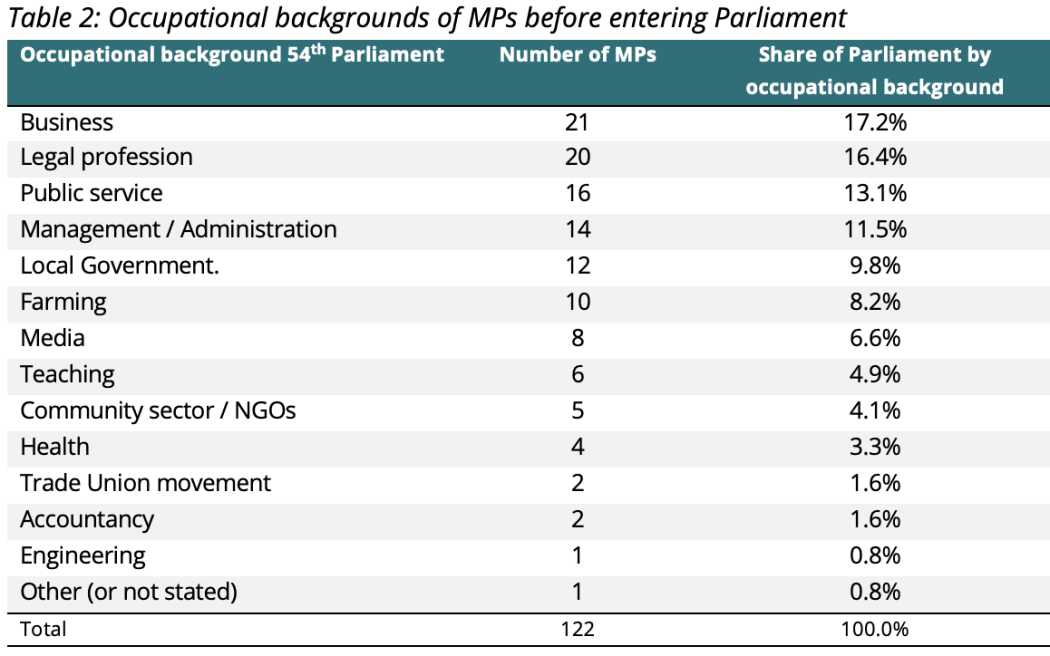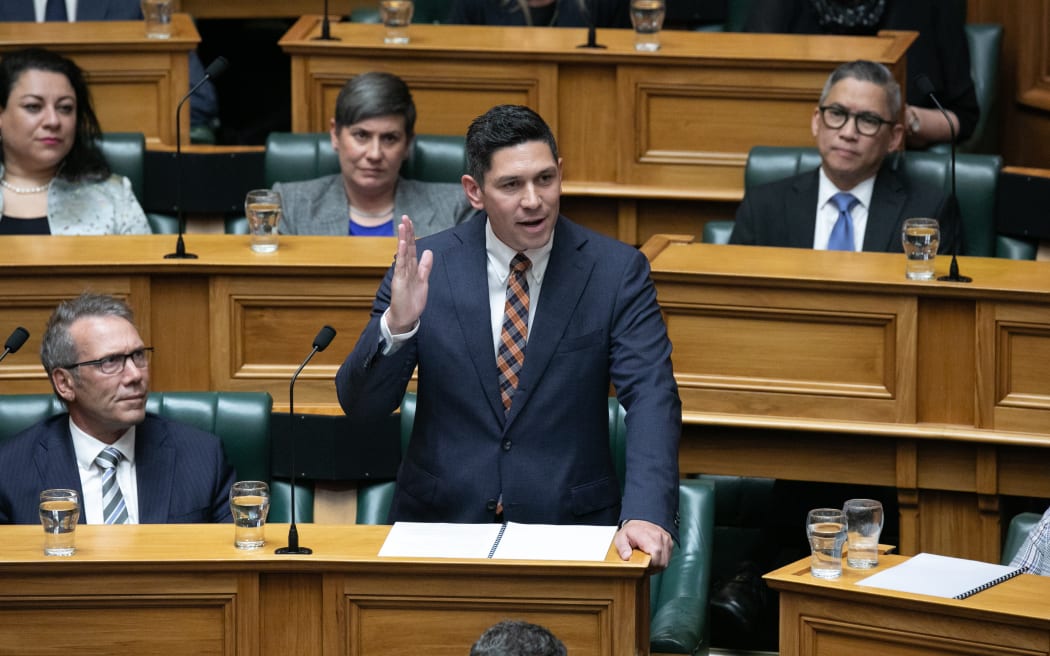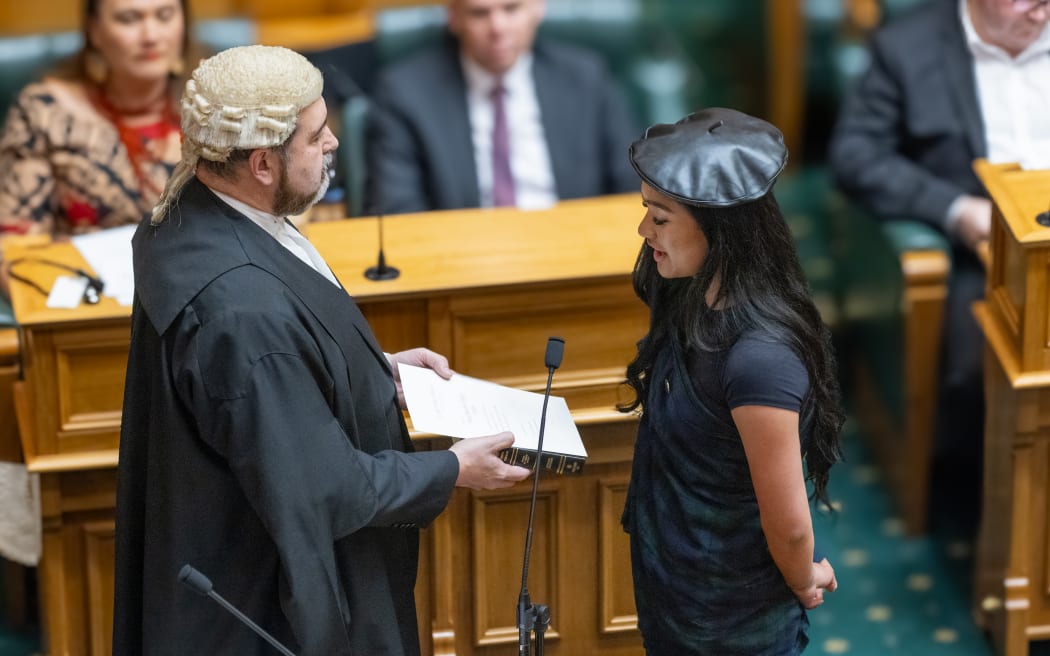The number of Members of Parliament who come from farming backgrounds has risen markedly, with a spate of newly elected MPs who have been leading figures in Federated Farmers.
Like the previous edition, the overall make-up of the 54th Parliament is far more ethnically diverse than in the early years of MMP. However the rebound in the number of MPs with agricultural roots and the rise in the average age of MPs both hint at days of yore in the Parliament.

Parliamentary Library Research and Information Photo: Parliamentary Library
More than 75 percent of MPs in the new Parliament listed their occupational backgrounds as being in one of six areas: business; legal profession; farming; public service; local government; or management/administration, according to the Parliamentary Library's research and information unit.
Return of the farmers
Ten of the 122 MPs are listed as having had farming as their occupational background before entering Parliament, in a bounce-back to a level not seen since two decades ago. The number reached an all-time low in the previous Parliament, with just 3 percent. But it's clear that in the 2023 edition, farmers are back.
Notably, five of the newly elected MPs have been in senior or executive positions within Federated Farmers, the country's premier lobby and advocacy organisation for farmers. There's a former president of the Feds' national body, two former regional vice-presidents, and two former Meat & Wool chairmen.
Two of the Feds alumni have quickly found themselves sworn in as ministers in the coalition government. First-time MP Andrew Hoggard of the ACT Party is associate minister for both the agriculture and environment portfolios, as well as minister of biosecurity and minister of food safety. Mark Patterson of NZ First, back in his second spell as an MP, is also associate agriculture minister, as well as minister for rural communities.
Adding to the strong representation for the primary sector in Parliament, several other MPs run successful businesses closely related to farming, such as in the lamb or wool industries, or have had experience working in agriculture. Furthermore, some MPs are also married to farmers.

Mark Patterson is sworn in as a government minister, 27 November 2023. Photo: Johnny Blades
The pattern of lobbyists becoming MPs is not new, and farming isn't the only sector involved. For instance, senior government minister Chris Bishop worked as corporate affairs manager for the tobacco company Philip Morris prior to entering Parliament in 2014.
Considering figures from Stats NZ that put 5.85 percent of New Zealand's working population as being in farming, the increased number of MPs with agricultural backgrounds suggests the people of this sector are over-represented in this Parliament.
While farming backgrounds have made a resurgence, some formerly well-represented occupations continue to drop. A previous strong mainstay, teachers, has tapered off steadily in recent years. Whereas in the 1990s and 2000s the percentage of teachers as MPs was consistently in the mid-to-late teens, it's now at 4.9 percent. The number of trade unionists is another on the wane, now a mere 1.6 percent, its lowest in at least three decades.
Business, legal and public
Businessperson remains the single largest occupational category with 17.2 percent, slightly in front of lawyer with 16.4 percent and public service with 13.1 percent.
There are also numerous current MPs who have worked in multiple common areas of occupation before coming to Parliament. This includes National's new MP for Rangitata, James Meager: a lawyer with his own consultancy firm, he has public sector experience, has managed strategic projects in the tertiary sector, helps out on his brother's farm, and has experience as an advisor and press secretary to government ministers.
Meager is just one example of several new members that had also previously been staffers or advisors to Parliamentarians, or who worked in the Parliamentary Service, which was somewhat of a breeding ground for MPs.

James Meager Photo: Johnny Blades / VNP
Age bounce
In another shift in the demographics of MPs, the average age of MPs has also jumped almost two years since the last Parliament to 49 years and 1 month. But this is still well within the expected ballpark, as the average age of MPs has hovered in the late forties for a long time.
Meanwhile the range of ages of MPs has widened significantly in the 54th Parliament, which boasts both the youngest and oldest MP of the past five legislatures. Spanning 57 years, the age range is significantly greater than the previous Parliament in which it spanned 42 years.
The youngest of the current batch of MPs, at 21, is Hana-Rawhiti Maipi-Clarke of Te Pāti Māori; while the oldest, at 78, is a guy called Winston Peters, who has been an MP before.

Hana-Rawhiti Maipi-Clarke is sworn in as a Member of Parliament, 5 December 2023. Photo: VNP / Phil Smith
Despite the trends in average age and occupation backgrounds of our MPs, they are still a fair way off the New Zealand Parliaments of yesteryear when most of the members were old, white, male farmers.
There is an historically high number of Māori MPs in the Parliament at 33, or 27 percent. And the number of women MPs is 55, which is the second-highest ever, after the high of 61 reached during the 53rd Parliament.

